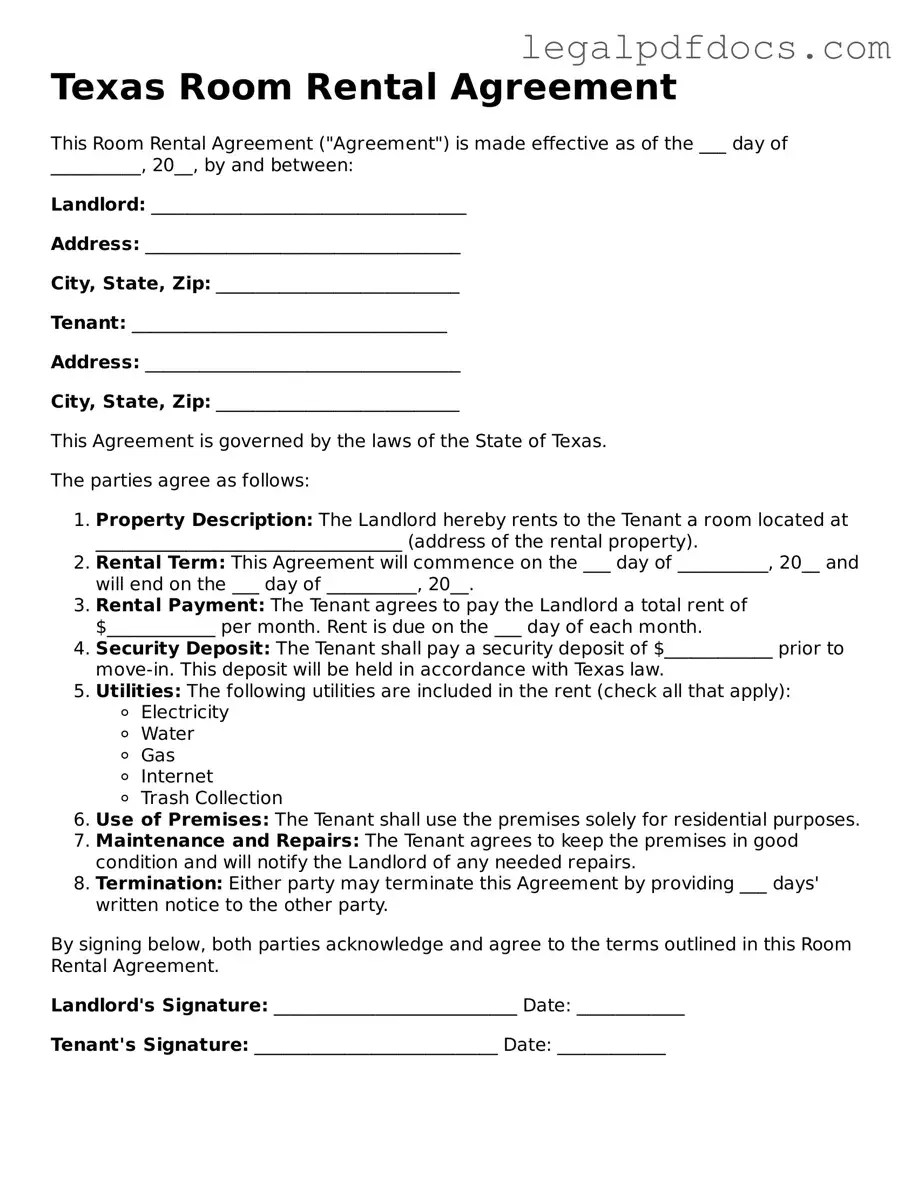Official Room Rental Agreement Form for Texas
The Texas Room Rental Agreement is a legal document that outlines the terms and conditions between a landlord and a tenant for renting a room in a residential property. This agreement serves to protect the rights of both parties, ensuring clarity regarding rent, duration of the lease, and responsibilities. Understanding this form is essential for anyone looking to rent a room in Texas, so take the first step by filling out the form below.
Open Room Rental Agreement Editor Here
